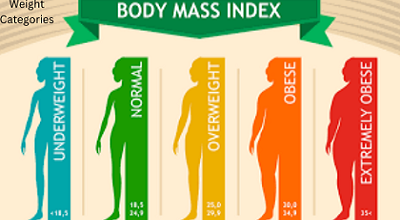Best #1 Taekwondo Cadet Weight Categories
In martial arts, weight divisions are established to ensure fairness in competition and to allow competitors to compete against the same opponents. The ages of the competitors and the nature of the competition affect the weight classes in the taekwondo Cadet Weight Categories.
-World divisions (seniors, minimum age 17).
-Olympic divisions
-(young competitors, minimum age 17)
-Junior divisions (younger competitors, minimum age 15-17)
-Division Junior Olympic
-Junior Division (players aged 12–14)
What is Taekwondo Cadet Weight Categories

Senior athletes’ divisions in the world and the Olympics Senior competitors compete in 16 weight categories (eight for men and eight for women) in a global and national taekwondo tournament. There are still eight weight categories available for Olympians, four for men and four for women. This difference is because the number of participants in Olympic Taekwondo is limited to 128 (8 divisions x 16). The World Taekwondo Federation, which governs Olympic Taekwondo, decided to reduce the number of weight divisions normally used in the World Championships from 16 to 8 to ensure that there are enough athletes in each division to compete in the Olympics (see another blog for more information on how Taekwondo Cadet Weight Categories athletes can compete in the Olympics).
Weight Categories

2005 or later Born
- Young Female: -20kg -23kg -26kg -30kg -34kg -38kg -43kg -48kg -53kg +53kg
- Young Male: -20kg -23kg -26kg -30kg -34kg -38kg -43kg -48kg -53kg +53kg
in 2002, 2003, and 2004 Born
- cadet woman -29kg -33kg -37kg -41kg -44kg -55kg -59kg +59kg
- Young Male-33kg -37kg -41kg -45kg -57kg -61kg
Born in 1999, 2000, and 2001
- cadet women 42 kg, 44 kg, 46 kg, 49 kg, 59 kg, and 63 kg
- Young Males: -45kg -48kg -51kg -55kg -68kg -73kg
Born 1999 or before
- Cadet Female players: -46kg -49kg -53kg -57kg -62kg -67kg
- Young Male players: -54kg -58kg -63kg -68kg -74kg -80kg
Para-Taekwondo athletes

SENIORS 8th KUP and above
Born around 1999 or earlier
- Young Male: -61kg -75kg +75kg
- Cadet Female: -49kg -58kg +58kg
ALL MATCHES TO BE 3 x 1 1/2 MINUTE NEAR SONDAY, SEPTEMBER 25, 2016
PROFESSIONAL CATEGORIES
born in 2005 or after
- Female Child: -20kg -23kg -26kg -30kg -34kg -38kg -43kg -48kg -53kg +53kg
- Male Child: -20kg -23kg -26kg -30kg -34kg -38kg -43kg -48kg -53kg +53kg
2002, 2003, and 2004 birth years
- Female Player: -29kg -33kg -37kg -41kg -44kg -47kg -51kg -55kg
- Male Cadet: -33kg -37kg -41kg -45kg -49kg -53kg -57kg -61kg
1999, 2000, & 2001 birth years
- Female Junior: -42kg -44kg -46kg -49kg -59kg -63kg
- Male Junior: -45kg -48kg -51kg -55kg -59kg -78kg +78kg
Born 1999 earlier
- Female Senior player: -46kg -49kg -53kg -57kg -73kg +73kg
- Male Senior -54kg -58kg -63kg -68kg -87kg +87kg
All athletes in the Senior Advanced Category are required to hold a current GAL card in accordance with ETU rules.
Any member who has to apply for a GAL card must do so by July 31, 2016, at the latest.
Applications should be made to British Taekwondo, Membership Services, The Business Place, Park Road, Mansfield Woodhouse, Nottinghamshire NG19 8ER through your club or organization secretary.
VETERANS 8th KUP and higher who were born before 1981
- Male Senior: -58kg -68kg -80kg +80kg
- Female Senior: -49kg -57kg -67kg +67kg
If there are fewer than four competitors in a class, weight categories may be merged.
Taekwondo Cadet Weight Categories athletes are normally divide into weight categories and may not exceed the maximum weight limit during competition. During championships, athletes are usually heavier than during competitions. In preparation for competition, the “fighting weight” may be reduce.
The day before the competition, weigh-ins are held. Participants usually go barefoot, without uniforms, belts, or combat gear. Overweight participants may strip and lose weight if they are very light; if not, they may try again later, usually after becoming dehydrated from intense training.
If a participant is overweight, the effort required to regain weight would make them unfit to race. In this case, he/she may be disqualified by the jury. Concerning weight, participants must be within the upper and lower limits of their weight category. The upper weight limit is determine by a decimal point. For example, if a competitor weighs less than 50 kg, the weight limit is 50.0 kg; if they weigh more than 50.1 kg, they are disqualified. If the weight is 50.1 kg, the weight limit is 50.00 kg or more, and less than 50.0 kg is consider insufficient and results in disqualification.



